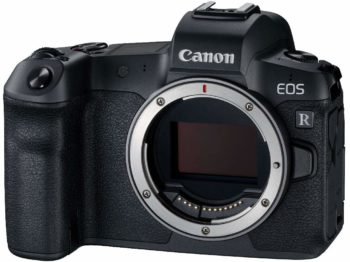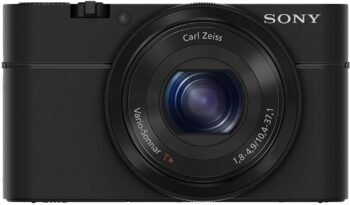Which Camera Is Right for You? Our Simple Camera Buying Guide!
Latest update: November 14, 2022
Buying a new camera isn’t easy! Our simple camera buying guide will help you find the right one for you and show you what you should pay attention to when buying a new camera.
“Which camera should I buy?” is the one question we get asked the most. And choosing the right digital camera certainly isn’t easy, since the market is huge.
What kind of camera should I get? A DSLR or a mirrorless system camera? Or is a bridge camera or a compact camera good enough? And what are even the differences?
What other aspects do I have to pay attention to when buying a camera? Megapixels, ISO, sensor? And what about lenses? Should I buy them directly with the camera or is it better to buy them separately?
Phew! Really not that easy. That’s why we’ve compiled all the important information you need when buying a camera in our camera buying guide. We’ll be presenting the different camera types and then giving you three concrete recommendations for each camera type for beginners and advanced users.
We’ll continue to update this post as new models become available. We always keep an eye on the camera market and if a new camera is released that we think is worth featuring, of course we’ll recommend it to you.
Please note: This blog post is constantly updated. You can be sure to find all relevant recommendations here.
Also read our other posts about photography
Our personal recommendations for every budget
Very often we are being asked about our personal camera recommendations. But since buying a camera is a very individual choice, our answer is always: “It depends” and we refer to this article.
Most of all it’s probably a question of money, which is why we recommend you exactly one camera for every budget right at the beginning. If we had to choose one within those budgets, that would be the ones we’d buy ourselves.
Thus if you don’t want to read the entire article, you find our recommendations right here.
Camera up to 300 euros: Canon PowerShot SX540
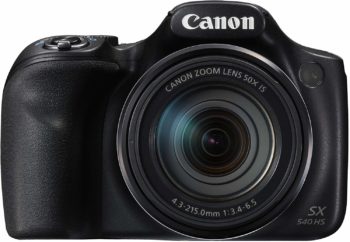 For a very small budget with a maximum of 300 euros, we recommend you to buy a bridge camera. Those are camera with a bigger lens that is permanently attached to the body.
For a very small budget with a maximum of 300 euros, we recommend you to buy a bridge camera. Those are camera with a bigger lens that is permanently attached to the body.
You don’t need to buy a seperate lens, but still get a pretty big zoom range.
The Canon PowerShot SX540 is the perfect entry-level camera for a smaller budget. The recommended retail price is about 280 euros, at the market you can find it for less than 250 euros.
To the Canon PowerShot SX540 on Amazon
Camera up to 600 euros: Sony Alpha 6000 including the kit lens
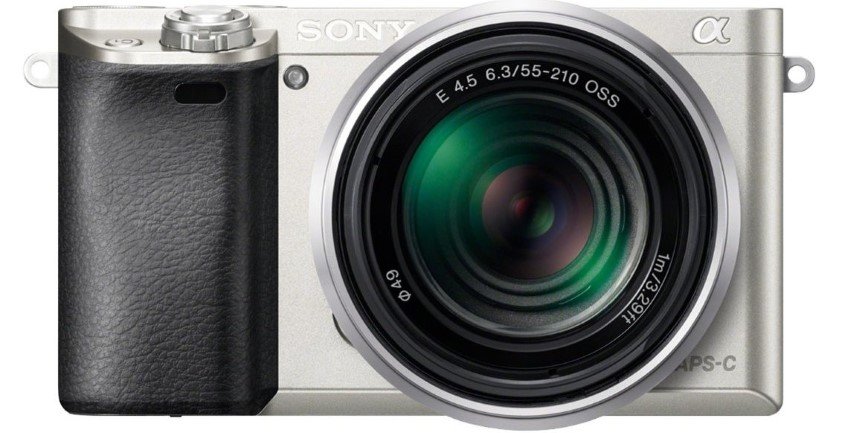 If you have a some more money at hand, you can get a noticeably better camera.
If you have a some more money at hand, you can get a noticeably better camera.
Here we recommend a mirrorless system camera with a simple lens. This way you can easly buy a better lens later without having to buy an entirely new camera, in case you want something a little better.
The Sony Alpha 6000 has been our top recommendation for quite some time for beginners.
We used the Alpha 6000 ourselves for a long time and can recommend it confidently.
For less than 600 euros you get the cmaera and the simple kit lens with a focal length from 16 to 50 mm – a very good money for value deal.
We have written a detailed article about the different lenses for the Sony Alpha 6000 here:
The best lenses for Sony Alpha 6000
Camera up to 800 euros Panasonic Lumix DMC-G81 with 12-60 mm lens
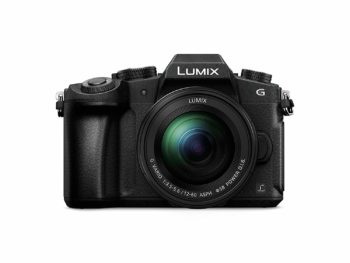 There’s a huge amount of cameras on the market for up to 800 euros.
There’s a huge amount of cameras on the market for up to 800 euros.
Panasonic offers a very good value for money with its mirrorless Lumix-Camera, with the clunky name DMC-G81.
You’ll be well prepared with the accompanying 12-60 mm lens. With the significant zoom-capacity, you’re especially well equipped for traveling.
Also, Panasonic has a great range of lenses, in case you want to treat yourself to something new in the future.
The recommended retail price for this camera, including the lens, is 799 euros, but in stores they are often 100 euros cheaper.
To the Panasonic Lumix DMC-G81 on Amazon
Camera up to 1,000 euros: Sony Alpha 6000 with 18-135 mm lens
If you have a budget of up to 1,000 euros, we recommend the Sony Alpha 6000 as well, but this time with a better lens than the 600 Euros version.
Here we recommend the 18-135 mm lens, the zoom lens which has the best value for money for the Alpha 6000.
It offers an excellent image quality and a significantly bigger zoom range than the kit lens.
For this version you will need to order the camera without the kit lens and this lens seperately, as they are not available as a kit.
To Sony Alpha 6000 on Amazon
To the lens on Amazon
Camera for 1,000 and more: Sony Alpha 7ii, Sony Alpha 7iii
You budget is higher than 1,000 euros? Then you get a really good camera that even profesionals use.
We have been using the Sony Alpha 7ii for a couple of years and simply love this camera.
The image quality is outstanding, the handling is perfect for us and when it comes to size and weight the camera is way better than better than professional DSLR cameras.
The only disadvantage is the relatively high price, especially for the additional lenses. But quality costs money and the camera is definitely worth it.
At the end of 2018, Sony has launched the successor model Alpha 7iii, which offers quite a few improvements, e.g. a better autofocus, longer battery life and an even better image quality.
However, the new model is even more expensive. While you can get the Alpha 7ii without a lens for about 1,000 euros, you will have to pay twice the price for its successor.
The Alpha 7ii is great and you can buy it with a clear conscience. If you don’t mind the 900 euros extra, we definitely recommend the Alpha 7iii.
To the Sony Alpha 7ii on Amazon
To the Sony Alpha 7iii on Amazon
Of course you will need a lens to this camera. You’ll find all tips on buying a lens in our detailed article:
The best lenses for Sony Alpha 7ii and 7iii
Conclusion
Those were our top recommendations on the questions “Which camera should I buy?”.
As we said before, there is no ultimate answer to this question, which is why we would love for you to read the rest ouf the article as well.
There we present even more products and tell you more about DSLR and compact cameras. We personally would not buy one of those, but maybe such a model is just the right thing for you.
Before we continue, we would like to give you the following information from our years of experience in buying cameras:
Experience No 1: Beginners can’t make a mistake with any of these cameras. If your budget isn’t too high, you can most certainly buy a cheaper camera at the beginning. Of course, the more expensive cameras have more to offer. But for beginners, most of those features are not important. What is way more important is that you learn to use the camera right. We warmly recommend our online course, so far only available in German.
Experience No 2: In case you already own a camera and want something better, it may also make sense to invest in a new lens. Very often it makes much more of a difference to use a better lens than using a better and more expensive camera.
Experience No 3: Over the years we have tried lots of different camera products and have, by now, found the perfect equipment for us. If you want to know which camera, lenses and accessories we use, make sure you take a look into our camera bag.
Which camera is right for me?
Before diving deep into the technical specifications, you should think about which type of camera is right for you. There are four main types of digital camera, the advantages and disadvantages of which we’ll briefly outline below:
- DSLR cameras
- Mirrorless system cameras
- Bridge cameras
- Compact cameras
We ourselves are huge fans of mirrorless system cameras and would not want to use anything else. Sometimes, however, a different type of camera might be a good choice as well.
DSLR cameras
Digital single-lens reflex cameras (more commonly known as DSLR cameras, or simply DSLRs) are the premier class of cameras. They provide excellent image quality and offer you countless settings.
The lenses of a DSLR are interchangeable, so that you can assemble your ideal camera according to your specific needs.
For a long time we only took pictures with DSLRs, so we can generally recommend this type of camera.
Advantages of a DSLR camera
- Large number of available interchangeable lenses
- Wide variety of manual settings
- Excellent image quality
- Optical viewfinder, i.e. you can see the exact image section that will be recorded through the viewfinder
Disadvantages of a DSLR camera
- Size and weight
- A DSLR only makes sense if you know the basic settings
Is a DSLR camera the right choice for me?
If you just want to point and shoot with your camera and you’re fine sticking to the automatic mode, then there’s no need to buy a DSLR. These cameras only really make sense if you know how to use the most important functions.
You should definitely factor in the size and weight when deciding pro or contra DSLR. A DSLR camera plus lens can easily weigh around 1.5 kg and takes up a lot of space in the bag. If your packing list for traveling is anywhere near as minimalistic as ours, you’ll quickly reach your limits with a DSLR.
Nevertheless, we don’t want to discourage you from buying a DSLR camera.
But be sure to also check out the section on mirrorless system cameras, because we think they are the better choice in most cases.
Which DSLR cameras are recommended?
First off, the good news: There are no truly bad cameras on the market, so you can’t really go wrong. Now we’d like to present some of the cameras we feel comfortable recommending.
Ultimately, it doesn’t really make that much difference if you choose a Nikon or a Canon or a completely different manufacturer. All the major manufacturers provide good quality cameras.
DSLR cameras for beginners
Price level: 300-500 euros.
The first camera is often a very special one. People generally remain loyal to the manufacturer of their first camera for a long time. Once you get used to the settings on a Nikon, you’ll probably think twice about making the switch to a Canon or a Sony later on. After all, humans are creatures of habit.
You can get an entry-level DSLR without a lens for about 300 euros, or for 400 to 500 euros including a kit lens. We can recommend the following cameras:
Canon EOS 2000D
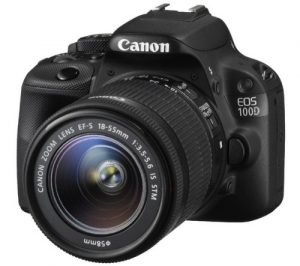 The Canon EOS 2000D is a beginner model from the Canon family and a real value for money miracle.
The Canon EOS 2000D is a beginner model from the Canon family and a real value for money miracle.
The camera is extremely light and compact for a DSLR and perfect for anyone who is taking weight and size into consideration. With the kit lens, this camera is available for unter 4000 euros.
To the Canon EOS 2000D on Amazon
Nikon D3500
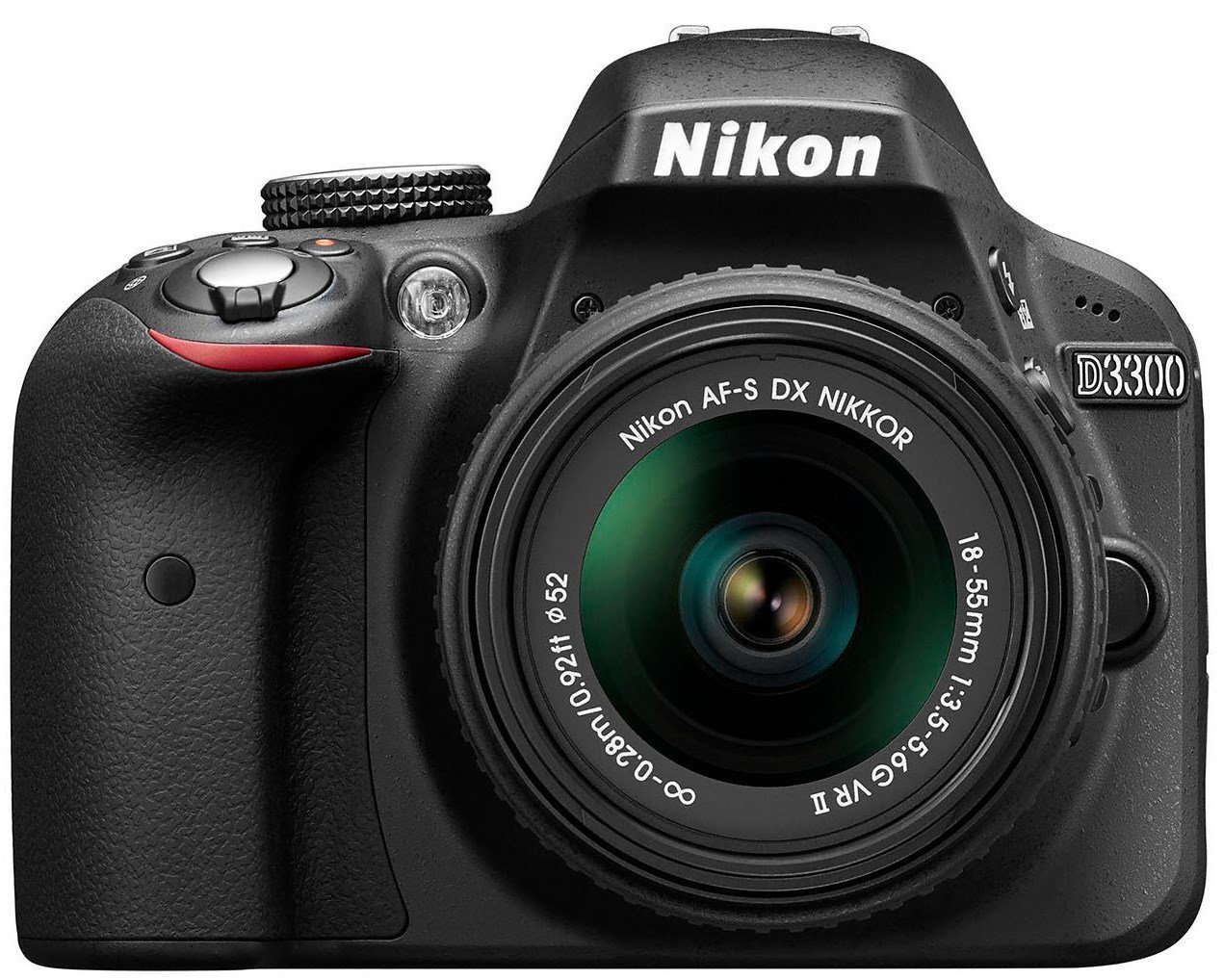 The Nikon D3300 is the perfect entry-level DSLR from Nikon. The camera with a kit lens will cost you less than 500 euros.
The Nikon D3300 is the perfect entry-level DSLR from Nikon. The camera with a kit lens will cost you less than 500 euros.
We learned to take pictures with a Nikon DSLR camera ourselves and can definitely recommend these cameras for beginners.
Nikon D5600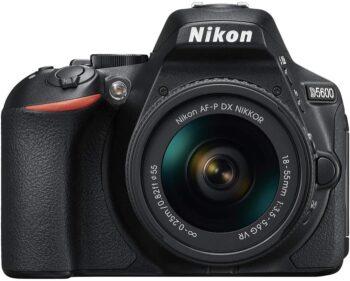
You can get the Nikon D5600 for under 600 Euro. For this price you get a really good image quality, a flip up display and a fast autofocus.
For us, the Nikon D5600 is the entry-level SLR with the best price-performance ratio currently available on the market.
DSLR cameras for advanced users
Price level: over 900 euros
At some point you’ll want to switch from your entry-level camera to a better model.
If you want a model for advanced users, then you’re going to have to dig a little deeper in your pocket. You should expect to spend about 1,000 euros on a more advanced DSLR camera. Of course we have another three recommendations for you.
Nikon D7500
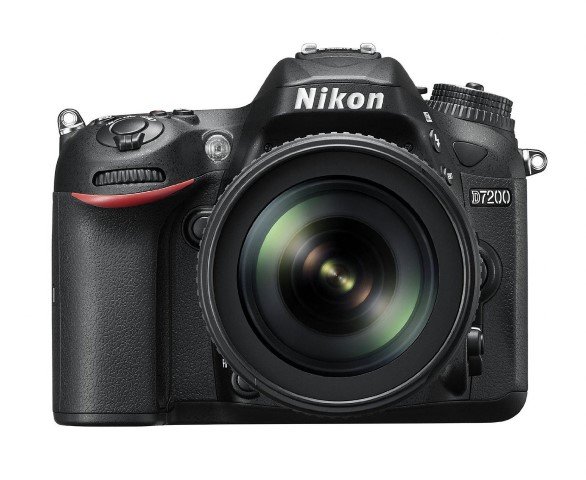 We used spent a lot of time taking pictures with the Nikon D7000, a predecessor to the D7500, and can recommend the series very much. The body is available for about 1,100 euros.
We used spent a lot of time taking pictures with the Nikon D7000, a predecessor to the D7500, and can recommend the series very much. The body is available for about 1,100 euros.
The camera has a very good image quality and is the best Nikon camera you available right now unless you really want to splurge on a professional-grade camera.
Canon EOS 77D
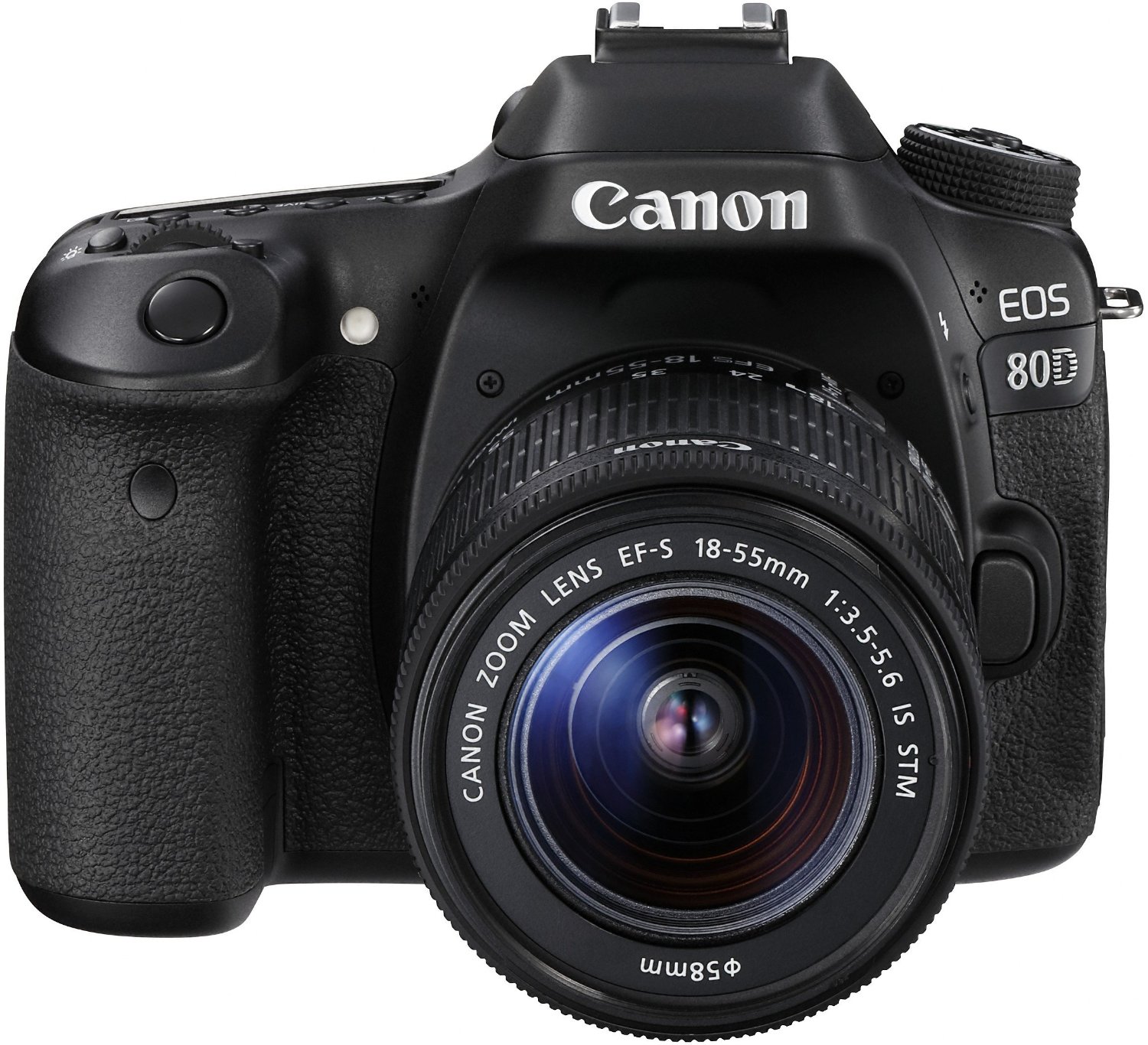 The Canon EOS 77D is still relatively new on the market. The camera excels with its excellent image quality and extremely fast autofocus.
The Canon EOS 77D is still relatively new on the market. The camera excels with its excellent image quality and extremely fast autofocus.
The body is available for just under 800 euros. A big advantage is the relatively small weight for a DSLR camera.
If you want to take the next step with a more professional camera and Canon is your favorite system, then this camera is definitely worth considering.
To the Canon EOS 77D on Amazon
Nikon D850
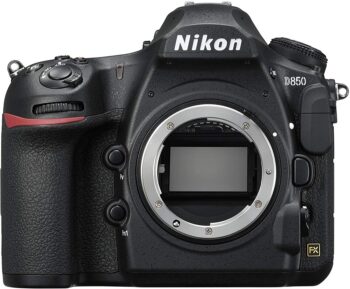 The Nikon D850 belongs to the best what is available on the market for SLR cameras at present.
The Nikon D850 belongs to the best what is available on the market for SLR cameras at present.
The full-format DSLR impresses with its outstanding image quality, but at just under 2,500 euros it also has its price.
Mirrorless system cameras
Mirrorless system cameras have become increasingly popular over the past few years, and with good reason.
Mirrorless cameras combine the advantages of DSLR cameras, such as manual settings and interchangeable lenses, with significantly reduced size and weight.
The absence of a mirror makes these cameras much more compact. However, this means that you’ll have to do without the optical viewfinder. Most system cameras have replaced it with an electronic viewfinder so you still have something to look through.
Taking pictures with an electronic viewfinder is a little different than with an optical viewfinder, but after a short period of familiarization you’ll get used to it very quickly.
After ten years of using DSLRs, we recently switched to mirrorless system cameras ourselves, and so far we haven’t regretted it one bit.
Advantages of a mirrorless system camera
- Manual setting options
- Excellent image quality
- Exchangeable lenses
- Reduced size and weight compared to DSLRs
Disadvantages of a mirrorless system camera
- Higher battery consumption due to electronic viewfinder
- Smaller range of lenses compared to DSLRs
Is a mirrorless system camera the right choice for me?
If you’re interested in exploring the manual settings of a camera and want to do more than just take a few vacation snapshots, then a mirrorless system camera is a great choice.
If you’re bothered by the weight and size of a DSLR, but still want to take advantage of the luxury of different lenses, a mirrorless camera is the ideal alternative.
In terms of image quality and operation, the mirrorless cameras are in no way inferior to DSLRs, and many experts agree that the future belongs to these cameras.
Which mirrorless system cameras are recommended?
The top camera manufacturers, Nikon and Canon, have completely missed the boat on the development of mirrorless system cameras. Neither of the two manufacturers offer any decent cameras in this segment, which is pretty surprising.
Other manufacturers such as Sony, Fujifilm, Panasonic, and Olympus are the market leaders here. In our camera buying guide we now want to present you with three models for beginners and advanced users that we can wholeheartedly recommend.
Mirrorless system cameras for beginners
Price level: 500-800 euros
Mirrorless system cameras for beginners are generally slightly cheaper than comparable DSLR cameras. You can already get a simple system camera with a kit lens starting at 300 euros.
Sony Alpha 6000 and its successors
 Sony is currently the star among the manufacturers of mirrorless system cameras and sets standards in this segment.
Sony is currently the star among the manufacturers of mirrorless system cameras and sets standards in this segment.
The most popular model is the Sony Alpha 6000.
Even though the Alpha 6000 has already been available for a couple of years, it’s still an excellent choice. We have used this camera a lot ourselves and still like to recommend it. With the kit lens the Alpha 6000 costs about 550 euros.
To the Sony Alpha 6000 on Amazon
By now, Sony has launched several successor models to the Alpha 6000: the Alpha 6100, 6300, 6400, 6500 and 6600. All models offer some improvements, but are also more expensive. For us, the Alpha 6000 is still a good entry-level camera.
If you want to spend a little more, we would recommend the Alpha 6400, which in our opinion currently offers the best value for money among the successor models.
To the Sony Alpha 6400 on Amazon
Nowadays there are also a substantial number of lenses available for the Alpha 6000. For an overview, check out this post:
Panasonic Lumix DMC-G81
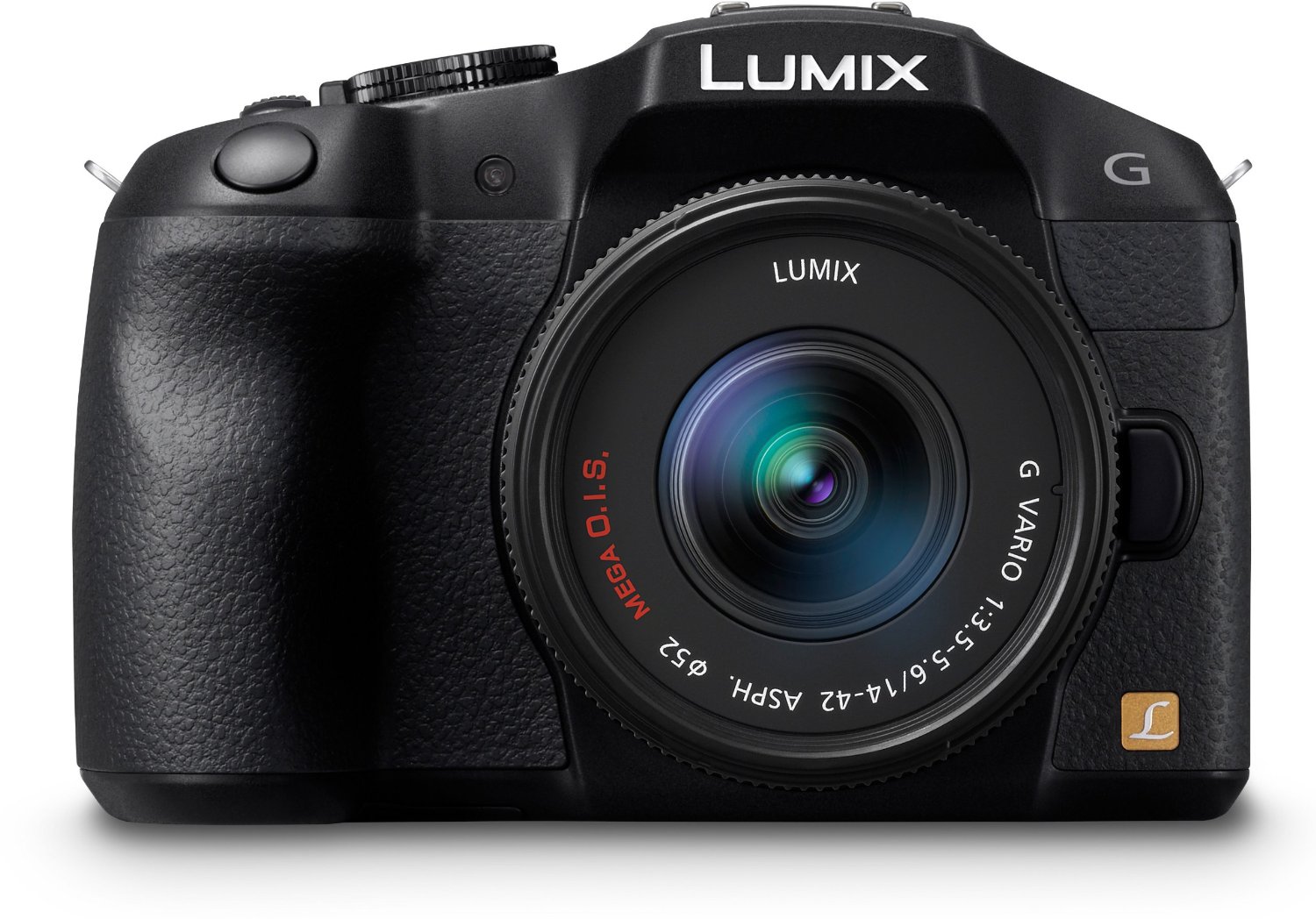 Besides Sony, Panasonic is also known for its very good mirrorless system cameras. The DMC-G81, which is available in a kit with the 12-60 mm lens, offers a great price-performance ratio.
Besides Sony, Panasonic is also known for its very good mirrorless system cameras. The DMC-G81, which is available in a kit with the 12-60 mm lens, offers a great price-performance ratio.
The lens offers a large zoom range and is suitable for almost all situations. In the kit with the lens you get the camera for about 800 Euro.
Panasonic also offers a wide range of lenses if you want to upgrade in the future.
To the Panasonic Lumix DMC-G6KEG-K on Amazon
Olympus OM-D E-M10 Mark III
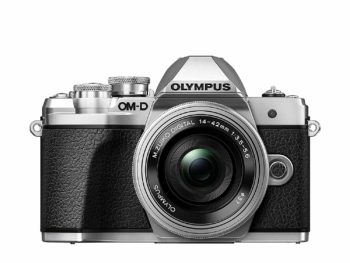 Olympus has does not need to hide behind Panasonic and Sony when it comes to producing good mirrorless cameras.
Olympus has does not need to hide behind Panasonic and Sony when it comes to producing good mirrorless cameras.
A really good beginner model is the Olympus OM-D E-M10 Mark III. The E-M10 offers some practical features such as a touchscreen and a tilting display.
As a kit with the 14-42 mm lens, the camera currently costs about 650 euros. For Olympus there are just as many lenses, as the connection is the same that is used for Panasonic cameras.
To the Olympus OM-D E-M10 Mark III on Amazon
Mirrorless system cameras for advanced users
Price level: 1,000-2,500 euros
There are also suitable mirrorless system cameras for advanced photographers with higher technical demands. The following three models leave little to be desired.
We have been using such a camera for years now and never regretted the switch from the DSLR. On the contrary.
Sony Alpha 7iii or Alpha 7ii
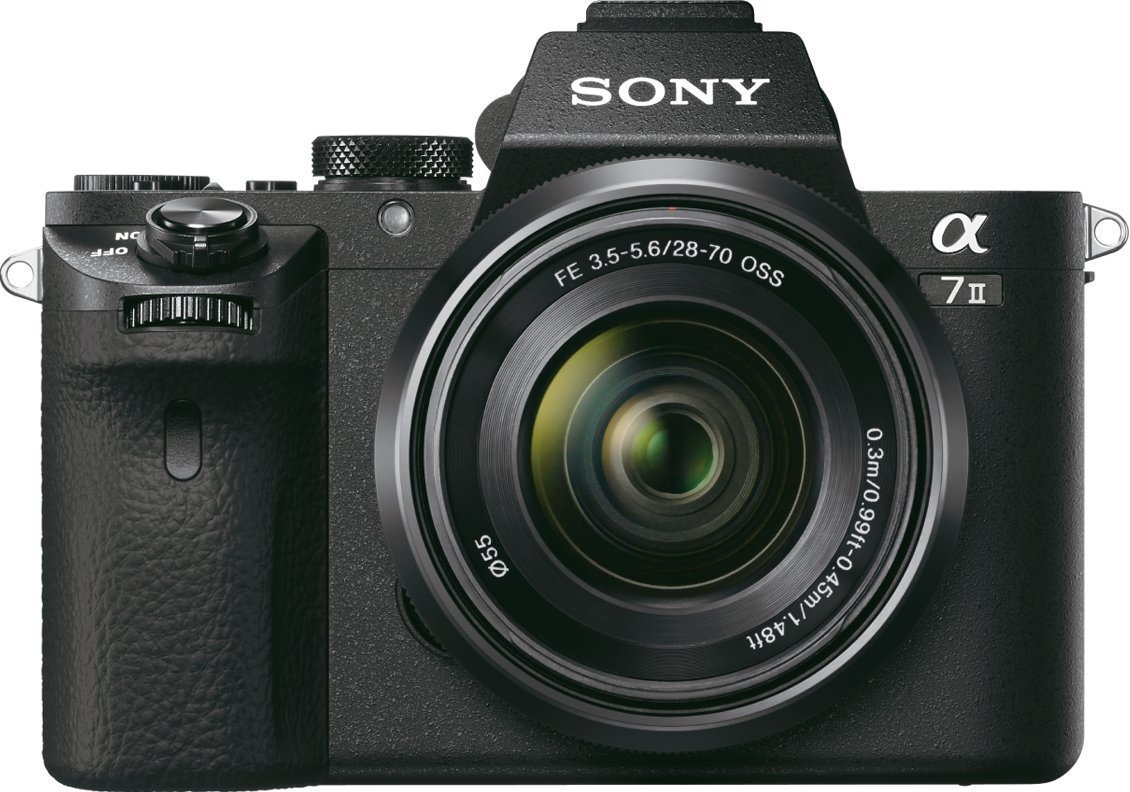 We have been using the Sony Alpha 7ii for several years and are absolutely thrilled. The camera is equipped with a full format sensor, takes pin-sharp photos and even at very high ISO there is hardly any image noise.
We have been using the Sony Alpha 7ii for several years and are absolutely thrilled. The camera is equipped with a full format sensor, takes pin-sharp photos and even at very high ISO there is hardly any image noise.
The autofocus is excellent and we can’t say anything negative about it. OK, one disadvantage are the relatively expensive lenses, but for that you will be rewarded with crisp, wonderful pictures.
You currently get the Alpha 7ii without the lens for about 1,000 euros.
To the Sony Alpha 7 II on Amazon
In 2018 its successor was launched, the Sony Alpha 7iii. Unfortunately, it costs about twice as much as its predecessor.
But in return some significant improvements were made. The already excellent image quality is even better, the autofocus is faster and sharperand the battery lasts even longer.
If that is worth 1,000 euros more to you, you need to decide for yourself. If we had to buy a new camera though, we would invest into the Alpha 7iii.
Here’s an overview of all available lenses for the Alpha 7:
Fujifilm X-T3
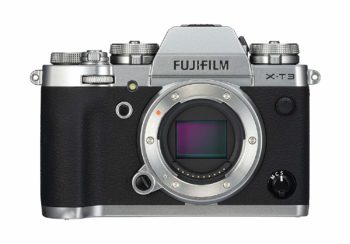 Fujifilm has been offering excellent mirrorless cameras for years. It particularly addresses professional photograpers, which is why there are mainly high-end cameras by manufacturer. The X-T3 is one of them.
Fujifilm has been offering excellent mirrorless cameras for years. It particularly addresses professional photograpers, which is why there are mainly high-end cameras by manufacturer. The X-T3 is one of them.
We would personally take a Sony camera, which offers a full-frame sensor for the same price. It is still a good choice, since Fujifilm stands for highest quallity products.
To the Fujifilm X-T3 on Amazon
Canon EOS R and Nikon Z6
For a really long time Nikon and Canon have completely ignored the market for mirrorless cameras. The entire world watched as Sony & Co. pushed the former top dogs off the throne by taking more and more market shares and customers.
2018 the sleeping beauties woke up and each launched a mirrorless camera in the high-end segment.
Both the Nikon Z6 and the Canon EOS R cost about 2,500 euros each, without the lens we might add. This is why we would not recommend the cameras for beginners.
If you already own a couple of Nikon or Canon lenses and want to switch to the mirrorless system, both models are a good alternative.You can then easily use your old lenses with an adapter.
To the Nikon Z6 on Amazon
To the Canon EOS R on Amazon
Bridge cameras
Bridge cameras bridge the gap between DSLRs and small compact cameras. They combine the characteristics of both camera types, hence the name.
Unlike the first two camera types, bridge cameras don’t have an interchangeable lens. Nevertheless, these cameras have a very large optical zoom range.
In many cases, the zoom range is much larger than that of the lenses usually used on a DSLR camera or a mirrorless system camera.
The zoom range of bridge cameras isn’t usually specified in millimeters like the focal length of a lens. It’s usually referred to as a 30x or 50x zoom. To give you a comparison: A 50x zoom on a bridge camera is equivalent to a lens with a focal length of 1200 mm. That’s pretty impressive.
Unfortunately, many bridge cameras have problems with image quality in the higher zoom ranges. But you can’t really do much with a zoom that high without a tripod anyway.
Advantages of a bridge camera
- Smaller size and lighter weight than a DSLR (with some exceptions)
- Large optical zoom range
- Good compromise between easy operation and manual setting options
Disadvantages of a bridge camera
- No interchangeable lenses
- Lower image quality compared to DSLRs and mirrorless system cameras in certain application scenarios (e.g. low light, low depth of field)
Is a bridge camera the right choice for me?
A birdge camera can be a good option, if you have a rather small budget, or if a compact camera is not enough for you but you don’t have ambitions to experiment with lenses either. After all, not having to constantly change lenses can be quite an advantage.
To be honest, we can’t really see much of an upside to buying a bridge camera in the higher price segments, since a good bridge camera only costs slightly less than a mirrorless system camera. And there are just too many drawbacks as far as we’re concerned.
Which bridge cameras are recommended?
Even though bridge cameras aren’t as popular among photographers as cameras with interchangeable lenses, the market is still pretty crowded. Almost all well-known camera manufacturers offer bridge cameras in all price and performance classes.
Bridge cameras for beginners
Price level: 250-400 euros
You can get a simple bridge camera for less than 200 euros. So a bridge camera is a good way to get started with photography without breaking the bank.
If you have a small budget, but still want to get serious about photography, then a cheap bridge camera is a good choice for the beginner.
Canon PowerShot SX540 HS
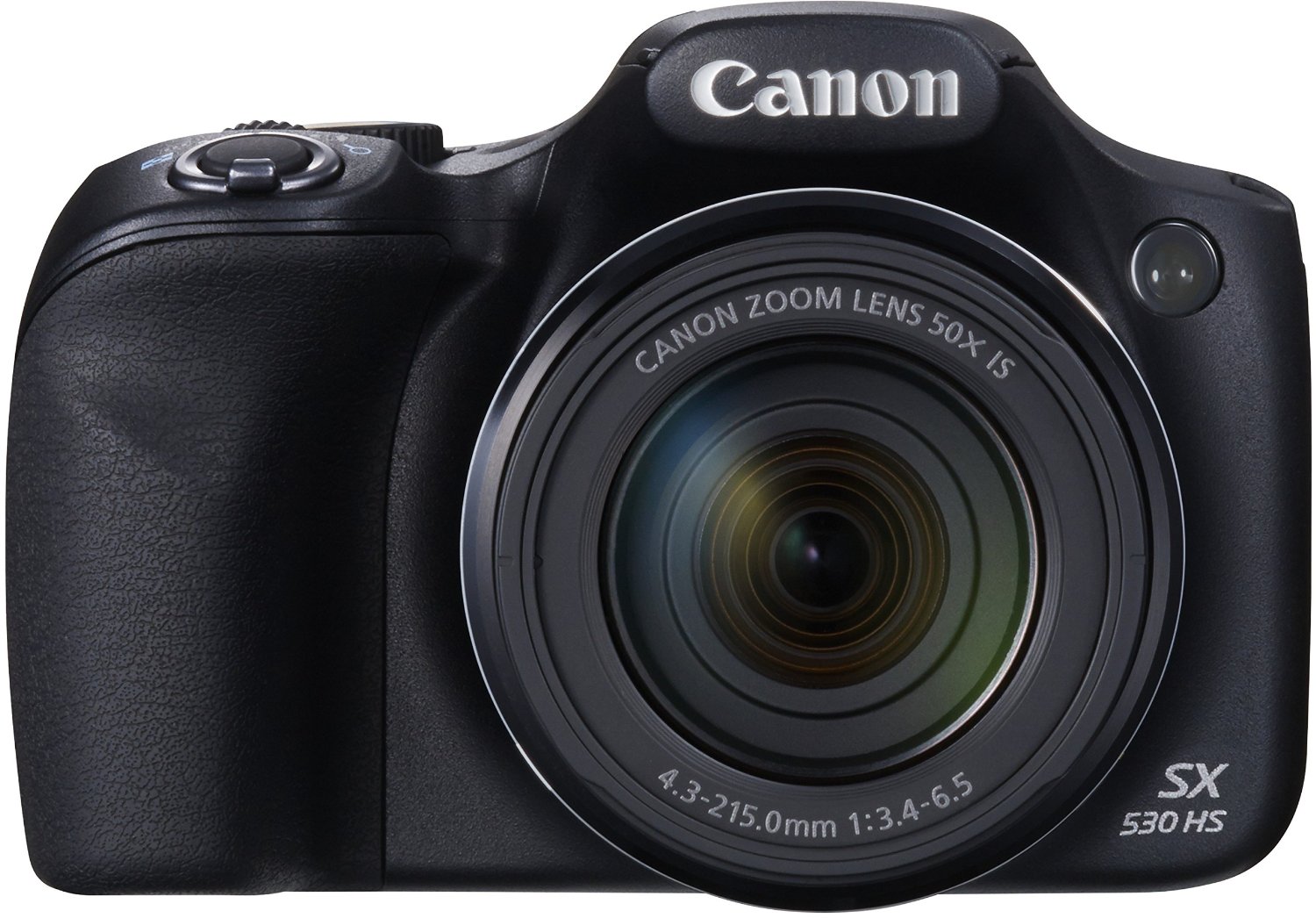 The PowerShot SX540 HS is a highly recommended entry-level model from Canon. This bridge camera provides a 50x optical zoom and an image stabilizer to help protect your shots from camera shake.
The PowerShot SX540 HS is a highly recommended entry-level model from Canon. This bridge camera provides a 50x optical zoom and an image stabilizer to help protect your shots from camera shake.
The Canon PowerShot SX540 HS costs around 250 euros, making it very affordable.
To the Canon PowerShot SX540 HS on Amazon
Nikon Coolpix B500
Another cheap compact camera for beginners is the B500. The Nikon Coolpix offers a 40x optical zoom and is available in different colors.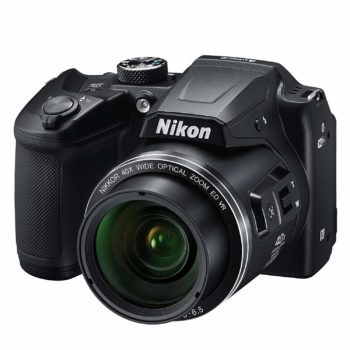
However, the camera does support the manual setting of aperture and shutter speed. If you want to improve your photography skills, you should choose another camera.
If the different automatic modes are enough for you, this camera is a good choice. It costs about 250 to 300 euros.
To the Nikon Coolpix B500 on Amazon
Panasonic Lumix DMC-FZ72
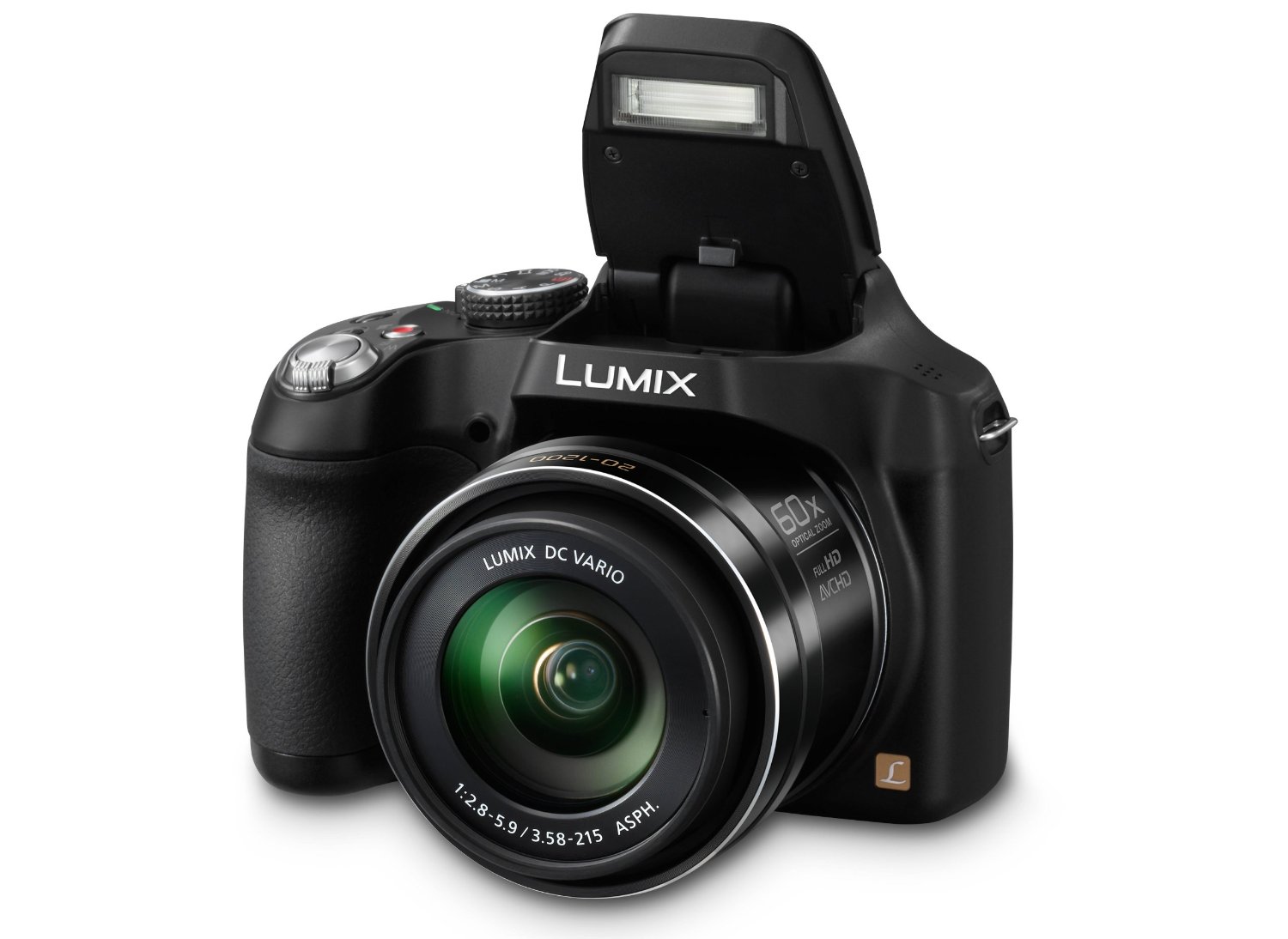 Panasonic also offers another excellent entry-level bridge camera with the Lumix DMC-FZ72, a name that rolls off the tongue. The camera is a little more expensive tan the other beginner models, but provides a good image quality and functions, such as a 60x optical zoom.
Panasonic also offers another excellent entry-level bridge camera with the Lumix DMC-FZ72, a name that rolls off the tongue. The camera is a little more expensive tan the other beginner models, but provides a good image quality and functions, such as a 60x optical zoom.
If your budget is a little higher, we can warmly recommend this camera.
To the Panasonic Lumix DMC-FZ72 on Amazon
Bridge cameras for advanced users
Price level: 600-1500 euros
For quite some time bridge cameras were only for beginners. Since then, the market with really good cameras for ambitious photographers grew a lot.
Sony DSC-RX10 and DSC-RX10M3
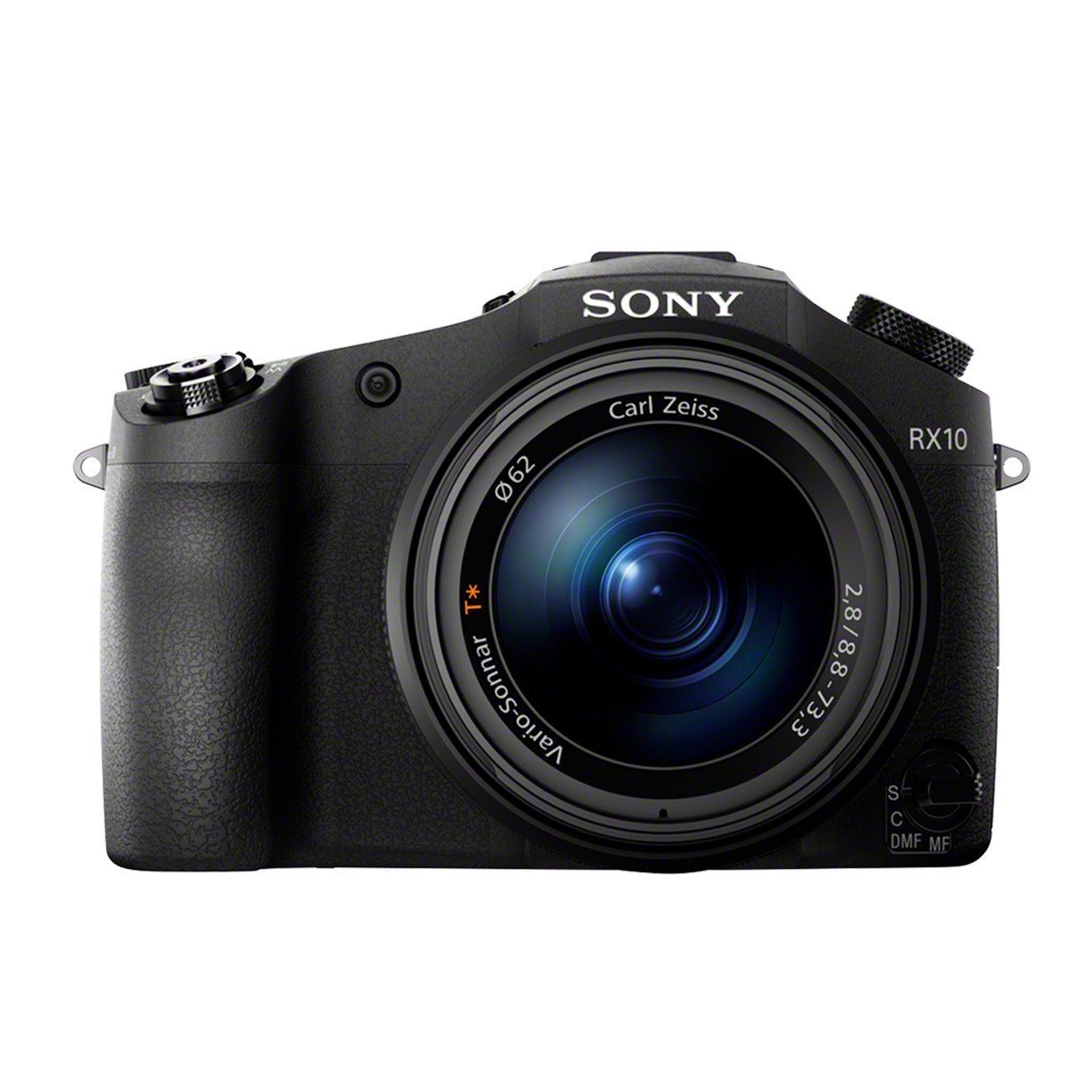 The RX10 series is probably the best bridge camera you can find on the market today. The image quality is very good. No wonder, because the Sony DSC-RX10 does without a typical bridge camera superzoom.
The RX10 series is probably the best bridge camera you can find on the market today. The image quality is very good. No wonder, because the Sony DSC-RX10 does without a typical bridge camera superzoom.
Instead, these cameras have Zeiss lenses. There are four models. The cheapest one is the Sony DSC-RX10 for about 700 euros, the most expensive one is the DSC-RX10M4 for almost 1,700 euros.
In our opinion, the best money for value offers the cheapest camera for 600 euros and the DSC-RX10M3 for about 1,000 euros, which is our personal favorite in this segment.
To the Sony DSC-RX10M3 on Amazon
To the Sony DSC-RX10 on Amazon
Panasonic Lumix DMC-FZ1000EG
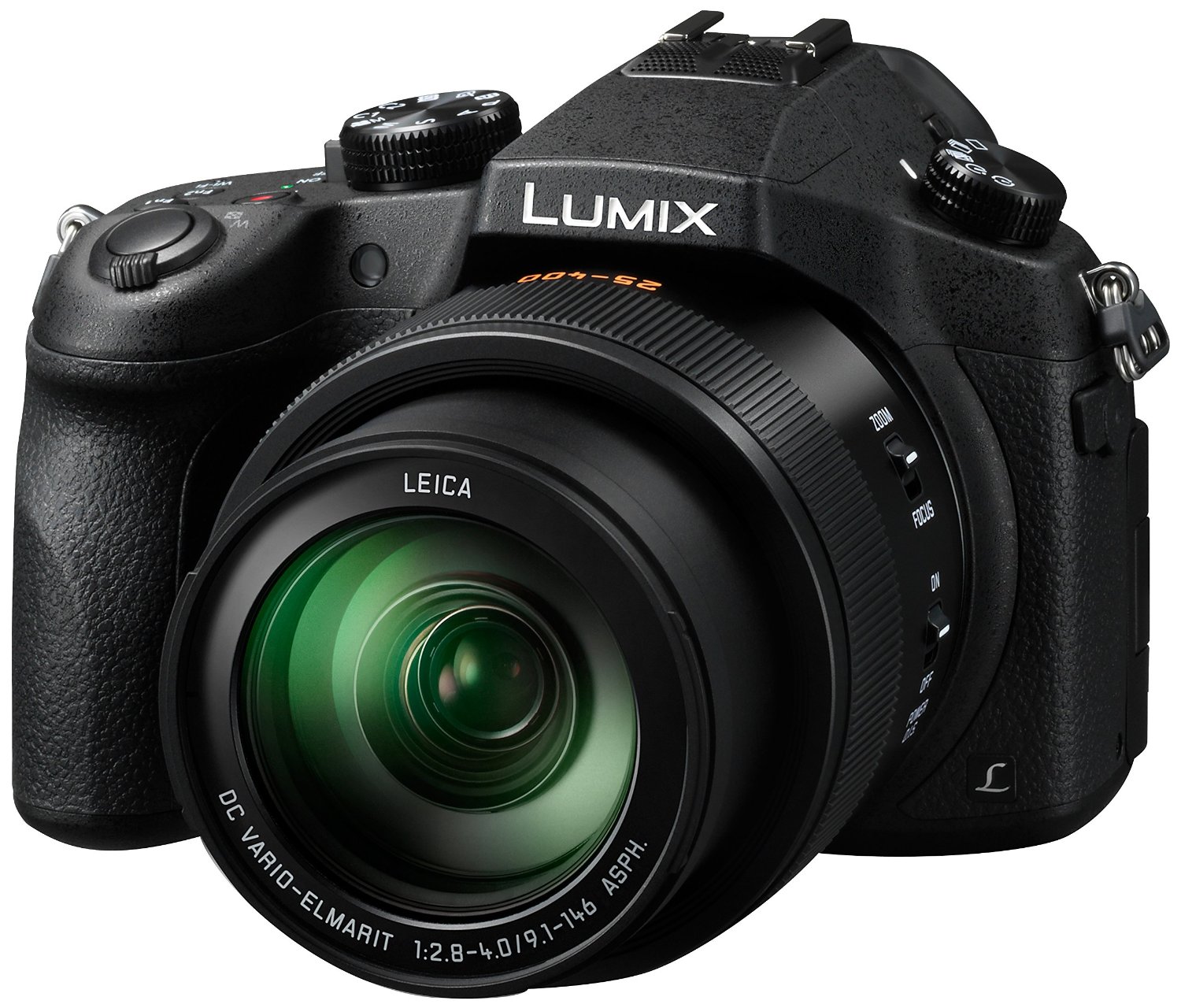 The Lumix DMC-FZ1000EG from Panasonic is also a top-class bridge camera. Priced at around 650 euros, it’s equipped with a Leica lens with a focal length of 25-400 mm and an aperture of f/2.8 to f/4.0.
The Lumix DMC-FZ1000EG from Panasonic is also a top-class bridge camera. Priced at around 650 euros, it’s equipped with a Leica lens with a focal length of 25-400 mm and an aperture of f/2.8 to f/4.0.
The Lumix DMC-FZ1000EG is also great for recording video and supports 4K and Full HD video.
To the Panasonic Lumix DMC-FZ1000EG on Amazon
Compact cameras
Many people have taken their first steps into the world of photography with a small compact camera. Of course, the main advantage of a compact camera is its low weight and minimal size.
Today, compact cameras have disappeared a little from the general perception and have been largely replaced by smartphone cameras.
But for us, a compact camera is still a sensible investment if you choose a high-quality model. Cheap compact cameras, on the other hand, are actually superfluous, since smartphones can now take just as good a picture.
We even use a premium compact camera when we don’t feel like taking our big cameras with us.
Advantages of a compact camera
- Low weight
- Small size
Disadvantages of a compact camera
- Lower image quality
- No interchangeable lenses
- Only a low optical zoom
Is a compact camera the right choice for me?
We don’t see the need to buy a cheap compact camera, which is why we don’t give a particular recommendation in this area.
If perfect image quality isn’t that high on your list of priorities and you don’t want to make any manual settings on your camera, we recommend that you just take pictures with your smartphone.
You probably always have it on you anyway, and a good smartphone doesn’t take worse pictures than a cheap compact camera.
It is different with the premium compact cameras, whose prices are in the high three-digit or even four-digit range. Here the image quality is also right. Such a camera is something for you if you want to reduce the size and weight of your equipment to a minimum.
Recommended compact cameras
Price level: 350 euros
Generally we would not recommend you to buy a cheap compact camera. In most cases you will drive better with a smartphone instead.
If you don’t have a smartphone or you still want to buy a cheap compact camera, we would still recommend a model.
Sony DSC-RX100
The Sony DSC-RX100 series is among the best in the compact camera range. Meanwhile there are seven different models. The Sony DSC-RX100 was the first of them and is still a good choice for getting started.
It costs around 350 euros and offers solid image quality, good light intensity and a focal length of 28 to 100 mm. If we were to buy a cheap compact, this is the one.
To the Sony DSC-RX100 on Amazon
Recommended premium compact cameras
Price level: over 750 euros
However, we can highly recommend the purchase of a premium compact camera. We have bought a compact camera ourselves and are very happy with it.
Fujifilm X100V
We chose the Fujifilm X100V, which we believe is the best compact camera on the market.
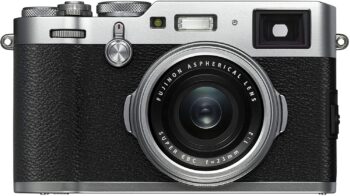
The camera has a 35 mm fixed focal length with an aperture of f/2.0. The image quality is absolutely outstanding and can easily compete with high-quality system cameras.
The operation is very minimalistic and is a lot of fun after a short period of getting used to it. The Fujifilm X100V is certainly not a compact camera for everyone. However, we can recommend it for everyone who is looking for something special and above all has fun with fixed focal lengths.
Panasonic LUMIX DMC-LX100II
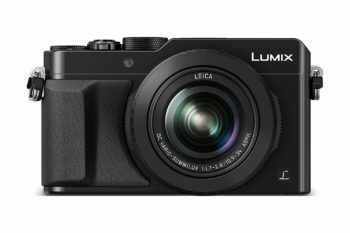 Panasonic also offers a range of compact cameras. In our opinion, the Lumix DC-LX100II offers the best price/performance ratio of all compact cameras and is our recommendation for anyone looking for the perfect all-round camera for less than 1,000 euros.
Panasonic also offers a range of compact cameras. In our opinion, the Lumix DC-LX100II offers the best price/performance ratio of all compact cameras and is our recommendation for anyone looking for the perfect all-round camera for less than 1,000 euros.
The camera is equipped with an extremely fast (f/1.7-2.8) lens with a focal length of 24 to 75 mm and its compact design makes it the ideal companion for all occasions. The price is about 750 Euro.
To the Panasonic LUMIX DMC-LX100II on Amazon
Sony DSC-RX100 V und VII
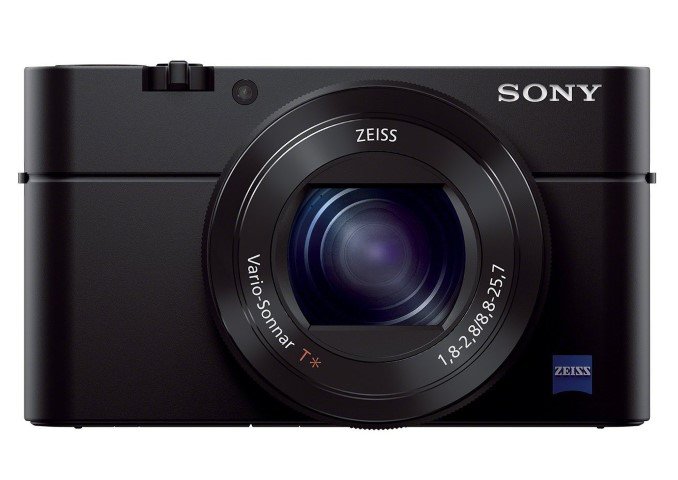 The Sony DSC-RX100 series is among the best you can get in the compact camera segment.
The Sony DSC-RX100 series is among the best you can get in the compact camera segment.
There are now seven different models.
If your primary goal is to record video, we recommend the Sony DSC-RX100 VII, the latest camera in the range, which offers a lot of great features specifically for video recording and is the best compact camera in the range. It is priced at just under 1,100 euros.
To the Sony DSC-RX100 VII on Amazon
If you want to use the camera mainly for photography, we recommend the Sony DSC-RX100 V. It costs about 800 Euro and offers in our opinion a better price-performance ratio than the successor model Sony DSC-RX100 VI.
With a focal length of 24 to 70 mm and a light intensity of f/1.8 to 2.8, you are very well equipped with this camera. With a weight of less than 300 grams, it is also one of the lightweights among the premium compact cameras.
To the Sony DSC-RX100 V on Amazon
What factors are important when buying a camera?
I hope reading all these camera recommendations hasn’t made your head spin. Obviously we can only present a fraction of the cameras available on the market in our camera buying guide.
If you’d like to explore a wider range of options, we’d first like to present the most important criteria you should consider when making your choice. Since you’ll probably be using the same camera for several years to come, the decision isn’t that easy.
But knowing what really matters makes things a little easier.
Are megapixels important?
For a long time, megapixels were considered the most important factor when buying a camera. The more, the better. That’s actually total bullshit. You only need a high megapixel count if you’re planning to take photos to be hung on large billboards or sold in galleries.
6 megapixels are more than enough for the average amateur photographer, and all the cameras presented here have way more than that. An average HD screen displays images at a resolution of 1920×1080 pixels, equivalent to approximately 2.5 megapixels. You can easily print a 6 megapixel photo on A4 paper without any noticeable drop in quality.
Something you might want to keep in mind before you succumb to megapixelomania is the size of the image files: The more megapixels, the more storage space your photos consume.
Good image quality with low light
Almost all cameras take good photos in good lighting conditions. The differences often only become apparent in extreme situations, for example in darkness. So when you buy a camera, it’s really important to make sure that you can still take decent images with little to no image noise at high ISO values of 1,600 or 3,200.
The lens also plays a major role here. If you have a high-speed lens, you can take good photos even in low light conditions. You can tell how good your lens is by the maximum aperture, or lens speed, which is indicated with f/3.5, for example. The lower the number behind the f, the faster your lens is.
F/3.5 is a very common aperture. Lenses with a maximum aperture of f/2.8 and lower are very fast.
Lens range
An important factor in the purchasing decision is the range of available lenses for the camera. If you choose a Nikon or Canon SLR camera, you’ll have a huge range of lenses that you can buy later on. The manufacturers themselves offer a wide range of lenses, and there’s an even wider variety of third-party lenses.
On the other hand, if you’re considering buying a less popular model, you should survey the range of available lenses before buying. That doesn’t have to be a deal breaker, but you should at least give it some thought.
Sensor size
If you’re buying your first camera, this isn’t an issue you’ll have to deal with. Cameras for beginners and advanced users usually have smaller sensors. This is no problem at all for your run-of-the-mill photographer and doesn’t cause any issues in terms of image quality.
But if this is your third or fourth camera, and you have a lot of experience and feel like a new challenge, you might want to think about a camera with a full-frame sensor.
Full-frame sensors offer even better image quality, which is especially important for very large prints. The strengths of a full-frame sensor are particularly evident in low light conditions, as they allow you to take better photos.
However, full-frame cameras are very expensive, very large, and very heavy. So you should weigh your decision carefully.
Zoom or focal length
The focal length of your lens determines the range in which you can zoom in or out on your subject.
The decision is especially important when buying a lens. There are lenses with a very large zoom range, such as the Tamron 16-300 mm, which is available for Nikon, Canon, and Sony. That way, you’re prepared for all situations. We’ve just tested this lens extensively.
But there are also so-called prime lenses with a fixed focal length. That might sound like a limitation, but there are times when this kind of lens can be pretty useful.
Handling the camera
It’s also important that the camera is easy to handle. If you have the opportunity to pick up and try out different cameras at a camera store, then do it.
When shopping online, you should pay particular attention to the reviews. They usually give you an idea as to whether a camera sits comfortably in the hand and whether the control elements are arranged in a sensible fashion.
Should I buy a camera in a kit with a lens?
Many DSLR and system cameras come in so-called kits where a lens is already included with the camera. You can usually save quite a bit that way as compared to buying them separately.
Generally, that isn’t a bad thing and if you want to take your first steps in photography, this is a good way to go. But if you already know that you really want to take a lot of pictures and have higher technical demands, we wouldn’t advise using a kit lens.
In that case, buy the camera body on its own and spend a little more money on a better lens. If you’re faced with the choice of spending more money on the camera itself or the lens, we would always recommend that you invest more in the lens.
But if you’re just starting out, then a kit is the best choice.
What camera is the best for you?
We hope you enjoyed our camera buying guide. Of course, a camera recommendation is always a bit subjective. That’s why we’re interested to hear which is your favorite camera and why. Leave us a comment, we’re very curious!
Note: We receive numerous e-mails every day with questions about which camera is best for your personal purpose. Please understand that we are not able to answer them in detail. As a 1-woman-1-man company we simply cannot cope with the time. If you have any questions, please leave us a comment below the article and we will try to help you as soon as possible. Deal?

